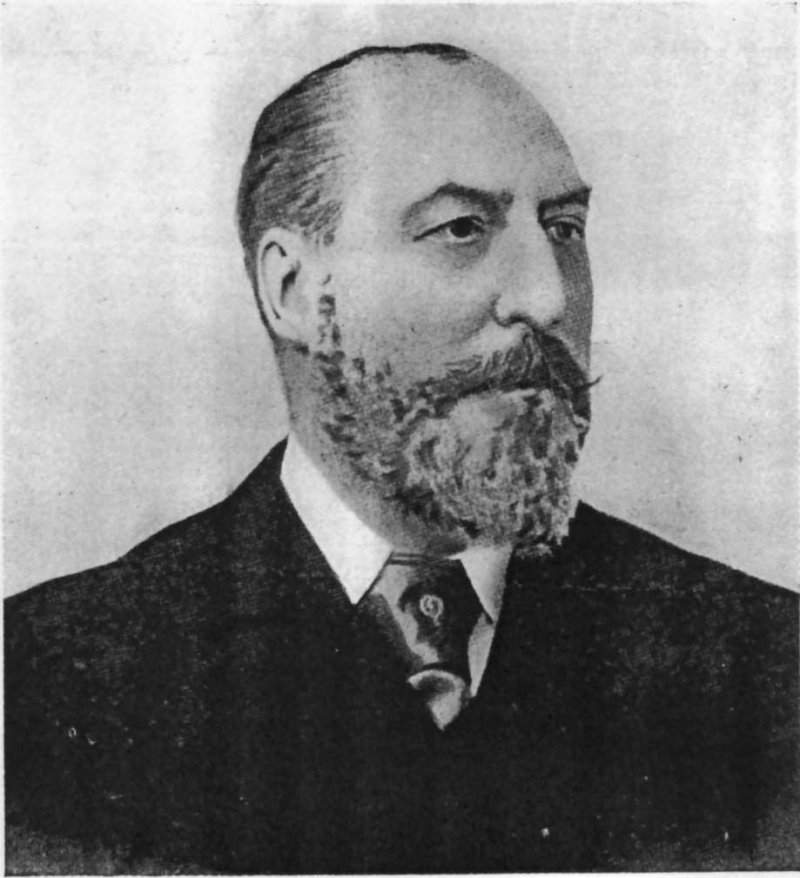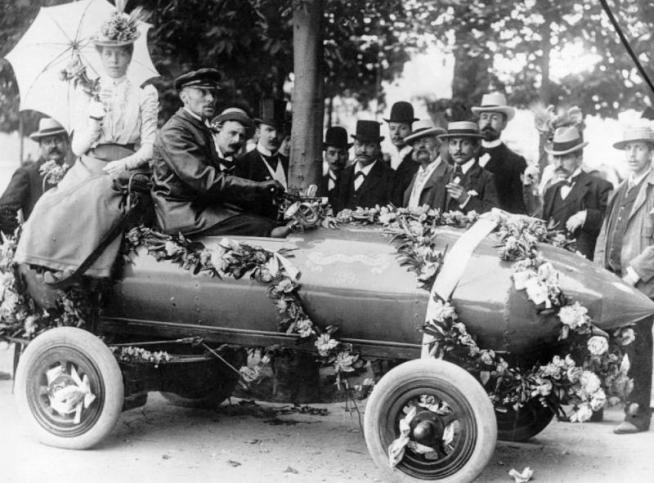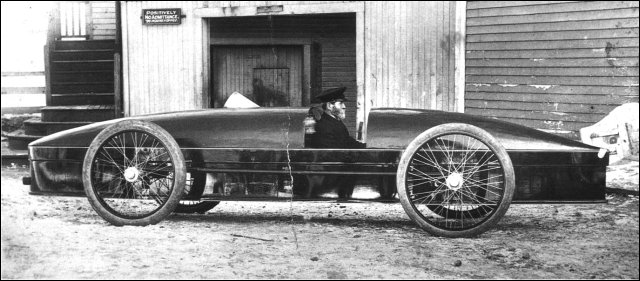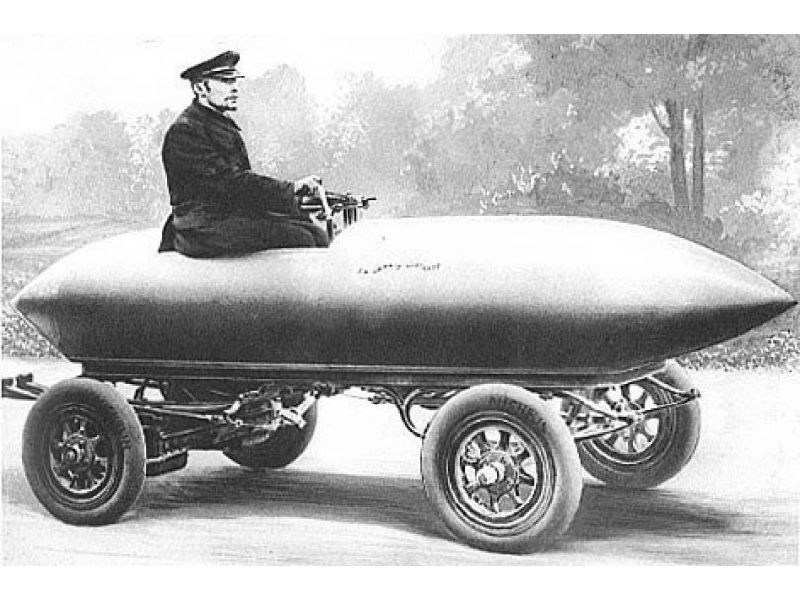December 1898. Four vehicles were getting ready to run on a deserted stretch of road near the village of Achères: three steam-driven cars and a two-seat electric vehicle built by Charles Jeantaud (on photo below), who was desperately seeking fame to improve sales of the cars he was producing. Considering that the competition in the electric vehicles market in the late 19th and early 20th centuries was very intense and that EVs were sometimes outperforming other types of vehicles in production and sales numbers, he could not miss an opportunity to take part in the first attempt on the World Land Speed Record.

The manufacturers of electric and steam cars wanted to blunt the attack of cars powered by petrol, fitted with combustion engines, and were seizing every opportunity to demonstrate their advantages. The French journalist Paul Meyan suggested organising a run for a relatively small distance for advertising purposes. Thanks to his good graces, the first land speed record-setting attempt took place on December 18, 1898.
The Jeantaud electric vehicle weighed 1,440 kg. The battery compartment was behind the cabin. The driver was sitting right above it. Electricity was delivered to two separate motors. They were mounted underneath the cabin and turned the wheels with the help of a chain-drive system. While we were telling you about the future record-holder, the parkway near Achères had already witnessed the smoke coming from the boilers of three steam cars.
Time for the car built by Charles Jeantaud to line up at the starting line. It was driven by the Count Gaston de Chasseloup-Laubat. After the loud and dusty runs performed by previous contestants, the judges and spectators met the electric vehicle with a grain of salt. However… The distance was covered in two minutes of monotonous buzz. After summing up the results, the silent one turned out to be the fastest on that day, setting the first official land speed record — 63.149 km/h. Then again, its fame didn’t last long. There were many volunteers to break the record and become a new rising star in the world of electric vehicles.

On your marks… go! Engine buzz, acceleration, triumphant finish. And the result was 66.657 km/h. The previous record was beaten only by 3.5 km/h; however, it marked the beginning of a long battle for kilometres and seconds. The world’s first land speed record did not live a month. And so the battle began!
Five days later, the Jeantaud driven by the «Electric Count» clinched another, though, a very hard-won victory. The car’s traction motors were ruined. Nevertheless, the record was set — 70.310 km/h. But another five days later the red-bearded Jenatzy managed to outperform his rival again — 80.336 km/h. A life and speed struggle indeed!

However, the Belgian engineer was not going to give up. He disappeared for two months, working hard in his workshop. He was enhancing the heavy vehicle, which had used up all its resources. And then he came up with something truly outstanding. The engineer mounted a thoroughly polished torpedo-like body manufactured from an aluminium, tungsten and magnesium metal alloy on a lightweight chassis with small wheels. He was right to think that it would allow reducing aerodynamic drag, which was sufficient at speeds like that.

It took Jenatzy almost a month to get ready for the next attempt. On April 29, he came back to Achères to cover a flying kilometre in 34 seconds conquering the cherished landmark by hitting 105.876 km/h for the first time.
The Count Gaston de Chasseloup-Laubat congratulated the winner and shook his hand. That friendly handshake put an end to their rivalry. After being defeated by the ‘Red Devil’, Jeantaud left motorsports. He started beating up and down producing electric and petrol-powered vehicles, neither of which were successful. In the meantime, Camille Jenatzy became famous for setting the World’s Land Speed Record making his business profitable. However, that didn’t last long. He was producing electric vehicles until 1903 only and then later he devoted his life to motorsports and started driving Mercedes race cars.
This was the end of the ‘electric’ period in speed records until the resurrection of electric vehicles many years later. The land speed record set by an EV in the 19th century turned out to be a hard nut to crack. It was withstanding the attempts performed by the petrol-powered rivals for three years and was finally beaten by a steam car.









